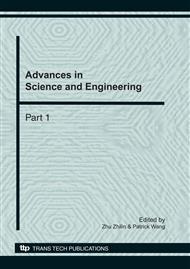p.974
p.979
p.985
p.990
p.995
p.1000
p.1006
p.1012
p.1016
Application of Hilbert-Huang Transform to Vibration Signal Analysis of Coal and Gangue
Abstract:
In this paper, a new method of vibration signal analysis of coal and gangue based on Hilbert-Huang transform is presented. Empirical mode decomposition algorithm was used to decompose the original vibration signal of coal and gangue into the intrinsic modes for further extract useful information contained in response signals under complicated environment. By analyzing local Hilbert marginal spectrum and local energy spectrum of the first four intrinsic mode function components, we found the difference of coal and rock in specific frequency interval that the amplitude and energy mainly distributed at frequency interval between 100Hz and 600Hz when coal was drawn, while the amplitude and energy were more concentrated at 1000Hz or so when gangue was drawn. Furthermore, the further analysis result from marginal spectrum of each intrinsic mode function component agreed well with the conclusion above. So the extracted features with the propose approach can be served as coal and gangue interface recognition.
Info:
Periodical:
Pages:
995-999
Citation:
Online since:
November 2010
Authors:
Price:
Сopyright:
© 2011 Trans Tech Publications Ltd. All Rights Reserved
Share:
Citation:


